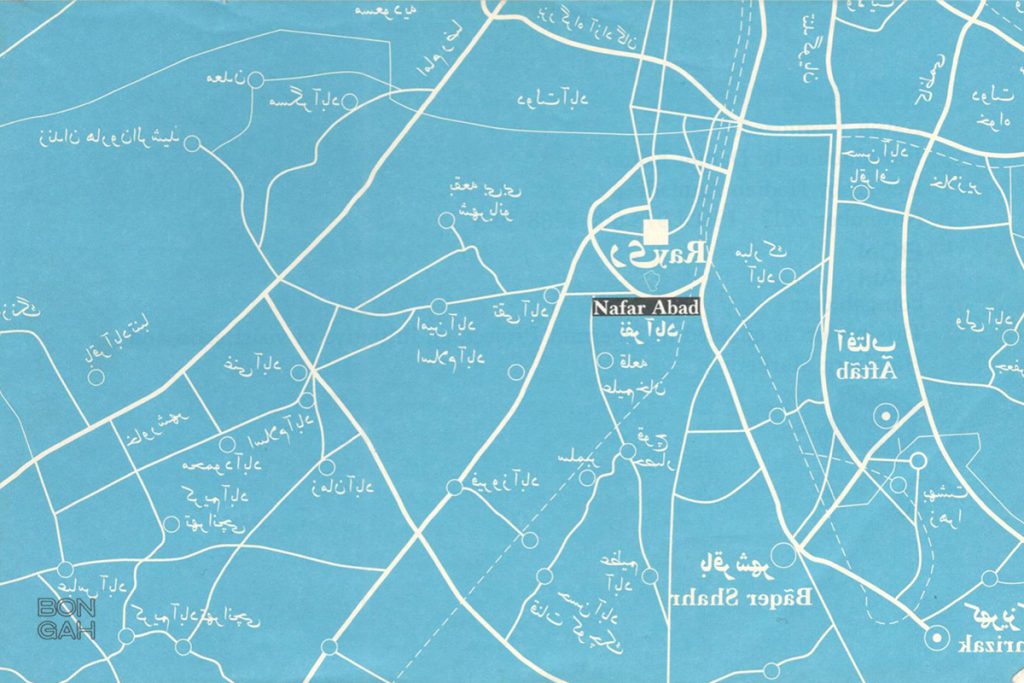Reconstructing the change / designing a toolbox of strategies
Observing the urban change through resistance
It is my pleasure to take part in this seminar at Humboldt University.
I think these days we can’t speak about architecture and urban apart from political or economical or social issues. They shape our urban imaginary .they model the form of space production and also its consumption.
Most of the cities over the past 50 years are changing to provide dominant profits and ideologies
Nowadays if we want to do something for the city, we must be intense about architecture and urban study dilemmas; I mean they have been created by new discourses that are empty of meaning with the Commodification of the city. In my opinion, we can`t observe the architecture work like artwork in galleries. Unfortunately, the mainstream architecture discourse has attached to form and appearance. This discourse not only empties architecture of meaning, but also put it in a capital framework and deforms it into a fetish.
I try to refer to Alexander Cuthbert`s approach to expound on what I want to say
In “emergent cities “book he has a brilliant chapter that name: Alphaville and Masdar: The Future of Urban Space and Form
He describes there:
Currently, there are 2 major explanations for urban design:
1- Primarily material
The other economic and political
For the first explanation, he mentions Jose Luis Sert who has a famous quote and defines “urban design as project design, pure and simple”.
This approach is too common these days. As an architect, it is easy points of view that facilitate my career.
But cuthbert's second approach is a more arduous proposition. It demands an altogether different level of engagement with urban form one originating in political economy.
Although this paradigm has its failure, I rather talk about a city like Tehran, this way.
In following Lefebvre and Guy Debourd's concept, I believe whatever mutate the city and increase its quality is not related to homogenizing or aesthetics , it relies on how social events created by locals during their daily life
As a Tehran-based architect, unfortunately, not only urban development is a contentious issue in the global south, I’ve got that our urban experts just translate the new urban concepts and try to compare Tehran with a global north metropolis like London to suggest a modern solution which most of them are not compatible with this complex context. In the other words, without an appropriate theorization of globalization, of capital formation, of the regeneration, of the participation only the most superficial interpretations of urban planning and design can arise
; While Tehran is a city full of paradox and complexity causes we couldn’t speak about some terms like participation or regenerating without focusing on how political and social development is in trouble. When these terms are more abstract rather than concrete and critical, connections between political matters and the city get lost. We live in a Totaliter country where even every single detail of our living is political. So how can you expect to speak about Tehran without social and political imagination?
Well, I tried to illustrate my framework so I think it is time to talk about Tehran image
What kind of place is Tehran?
Is a city full of highways, tall buildings and shopping malls or a city has been encountered with massive assets to reconstruct itself again and again and relocate poverty and social problems to the margins.
Is a city full of café, art galleries and lights? Or a city where the tycoons encompass around the meaning of the Tehran Nostalgia to invest on the down town, the region where hidden to investigation and maybe wasn’t attractive enough to be an urban subject till now. Just like the region where Mahshid has chosen to research.
It is better not to talk about urban and architecture without specifying our position in these different spectrums
Obviously Tehran has been confronted with a serious crisis the last few decades.
I mean that Tehran is surrounded by capitalist power. The process of urbanization goes parallel with the development of capitalism.
Although Iran revolution arose from Islamic ideology that emphasized to conflict against imprelialism, but after the iran-iraq war at the end of the 80s, central power began to transforming and ravenously imitate from neo liberalism with support from military force and central power.
A few years ago our office was studying about Oudlajan region that is placed in the east of imamzadeh Yahya neighborhood. It sounds they have an actual resemblance
Maybe it sounds interesting first, we did this study for a theatre named “lady Tehran” that performed at Konstanz University in 2009 it depicts women's situation in Iran in comparison with oudlajan tissue .it is more than our time and patience to talk about this performance. You can search about it if you like. Of course, we continued our study after that.
I share with you a timeline that we provided for that study. I want to show you via this how we survey our project.
This timeline illustrates what`s happened in oudlajan from 1980 to 2015. And how Capital and government policy transformed a residential neighborhood into an empty and ready to invest the region
Time line
…………………….
In recent years, investment in empty sites and build trade centers or giant buildings transformed into investment in Nostalgia. Experience has shown when investors get into the abandoned region or urban decays in downtown, convert it to luxuries space to increase their added value
With attracting celebrities who claim to worry for the condition of the city, including artists and architects, the municipality attempts to aestheticize the city, covering the bitter reality of social injustice. Unfortunately they more than anything else care merely for the appearance of the city
Tehran is aestheticized by the means of reviving houses from the Pahlavi era in the downtown, as well as building luxury cafes and exotic urban sculptures. We indeed appreciate the improvement of the visual quality of Tehran as the reformation of certain affairs helps the citizens in one way or another; the problem, however, is that the "beautiful city" and the "clean city" replace the "justice-oriented city" and the "city for the public." Moreover, all the citizens' political problems have taken up an engineering and technical form, addressing every problem with an aesthetic solution.
For that reason, all the development-oriented programs for construction caused extended disorder in the urban context, capturing the profit from a significant number of the citizens and transforming the socio-humanly ecology. This depoliticized formal development, in which plans and master plans have seized the social life of the citizens for making abstract spaces, in certain cases, unconsciously have made an opportunity for several urban resistances to emerge, albeit on small scale. This creative form of resistance has taken place in non-spaces where has been either unnoticeable for the planners, they have disregarded those regions, or they assumed that the inhabitants accept the abstract space of the plans, by force or by choice.
The Commodification of urban space makes a new role for architects; convert them to the technicians who can use bureaucratic regulations correctly and legitimate the banks and semi-public organization`s investments in Tehran
Besides my practical career in my firm, I am co-assistant and sponsor of the “Rokhdad Tazeh Mostanad” institute that focus on Critical Urban Studies since 2015. During this collaboration, I am inducted with the people who gave me a correct sight. Luckily I found some groups and urban activists who elicit and record creative urban experiences throughout Tehran.
I want to imply some of them that I found more interesting for this discussion.
As Lefebvre`s belief, during their daily life, citizens can occupy and modify urban spaces where are planned for the defined function and acutely certified profit.
Let's observe some of them I've chosen for this lecture.
Mr. Mohammad Bahiraee is one of those guys who recorded, analyzed, and criticized many of them in the field of social and political discourses. I used his article “Space intervention; Actions of the opposite norms” to speak about “ARAJ neighborhood “and “Moradabad region”
What happened in ARAJ neighborhood?
This region is located the northeast of Tehran as you see on map
The interesting story of Araj starts with winning the council of this neighborhood when a number of local activists decided to participate in the council elections. These activists had a long-lasting background in civil actions, that is to say, their playground has been always out of the control of governmental institutions.
From a time onward, however, they decided to participate in the council election, enjoying an opportunity to make essential changes. Joining councils may result in either making a bureaucratic image of the activists or equip them with an opportunity offered by an official institution to transform bureaucracy. Among these two options, the aforementioned activists chose the second one; not making a bureaucratic image of themselves, instead, they used their official position to strengthen people's participation.
From the very beginning, they made fundamental transformations in the heart of the council institution.
The outcomes were
1- The Postponement of the Highway Construction. This venture was unprecedented in Tehran modernization history
2- Also, the Participation Plan which was prepared by the Locals helped that the inhabitant's right of planning and their understanding of the spatial highlighted the distinction between the dichotomy of "ours" and "theirs". If we gain the ability to define our own spaces and speak of them as "ours" through district planning the consequences of this right reveal themselves as the right of identifying borders, every nook and cranny, streets, and the management of spatial being
What happened in MORADABAD neighborhood?
This region is located the west of Tehran as you see on map
This narration is completely different. It is not related to the bureaucratic loopholes, it came about with children were guided by an adventurer activist “FARSHID SAKI”. Maybe he hasn’t any academic education but he has been involved with the impressive urban practices
As BAHIRAEI has named the titles, I do it either and read some parts of his essay
- Sport and space capture
"Fellows, come out of your homes!" was the first slogan. It was sports that encouraged the necessary reconcile of the inhabitants and the neighborhood. One of the inhabitants owns a Ping-pong table; children could appropriate an abandoned parking area. Ping-pong requiring a minimum of space engages people in questions for the future. The owner of the Ping-pong table is a retired colonel who lets everybody use his table. This table becomes a motivation for children to look for another place; an abandoned parking area. They repair, color, and capture this place. After, they start training others and even holding first inter-neighborhood competitions. Its extraordinary result is that children, who never went out of their houses by themselves, appropriated the neighborhood as their primary playground. Eventually, this also results in certain friendships.
- The Life of the Tree Is As Valuable As the Life of the Neighborhood
There was an old aged tree in Moradabad that when a part of its body underwent a natural decay, people started causing other damages to it. Children, however, attempted to take care of the tree for 12 years and prevent it from falling. They named their action "surviving the tree." After, they made an effort of planting a tree per inhabitant, naming them after each individual, as if the neighborhood is not only home to the people but also for the trees. Therefore, it was people's responsibility to take care of the trees, survive them, and most importantly, prevent them from death. Taking care of a tree for more than a decade, filling it, and preventing it from falling is important and invaluable in a time when institutions, that are supposedly people's agents, cut off thousands of trees in the nighttime. It is even more important when they plant trees named after inhabitants. Why not take care of the rest of urban affairs while our agents, with their economical capability, do not take care of trees. Possibly, inhabitants of Moradabad asked themselves this question and attempted to be responsible for more affairs.
At the end of this lecture, I want to show you my favorite case study, Due to its architectural atmosphere and its delicate approach to turning an empty place into an urban living area. It has been named Nafarabad sofa space
I recognized this urban practice through Daniel Kotter’s discursive project with the name “hashti-Tehran”
The project outcomes were an episodic book and an episodic film. I suggest watching it
The forth episode is about Nafarabad neighborhood, KAVEH RASHIDZADEH is an architect who wrote and documented this chapter and I refer to it.
First I tell you where is nafarabad?
It is a region in the southern margin of Tehran where is adjacent to a holy and large amount of pilgrims shrine “Abdul Azim”
Despite almost being a historic neighborhood, NAFARABAD has been subject to complete eradication due to its adjacency to a holy shrine. The gradual deterioration and demolition of NAFARABAD in the past 2 decades has been the consequence of such planning for expansion
While the municipality demolishes the neighborhood piecemeal to make way for the expanding needs of the adjacent Shrine, the population temporarily inhabits the space in between the small scale of residential buildings by setting up furniture, armchairs, and chairs for a local meeting, creating a subversive public version of the private living room.
One of the locals was the key person; his name was “amo abbas”. His maternal house was located across the alley from his own and was situated in the center of the neighborhood where the main alleyways cross. It had been an old simple small single-family house with a courtyard built on a plot with less than 100 M2 and surrounded by 3 other neighbors in its northern, eastern and western sides.
As you know, the courtyard is an inseparable element in the spatial organization of Iranian traditional houses. This courtyard was equipped with 2 simple elements in the middle: a large tree and a small pond.
But the black shadow of peremptory urban development was shaded there. Amo-abbas’s maternal house was categorized as deteriorated. In 2013 a commissioned consulting firm proposed a plan for nafar-abad called the special plan that envisions the complete eradication of the neighborhood with a plan to create a landscaped park with a lake combined with some underground hotels apartments and commercial spaces.
Indeed, this proposal would change the image of the area to a modern and eye catcher image and provide more opportunities to invest. Also, it can attach sacred matter to the commodification matter. Immediately the municipality undertook to execute it by persuading locals to sell their houses for demolishing
Well, what do you think, happened then in that region?
NAFAR-ABAD became composed of scattered groups of buildings or houses detached from their old neighbors. Therefore, this new urban landscape is a landscape with a large portion of open spaces where would be caused insecurity dead zones.
Ok, after this flashback, let`s go back into AMMO ABAS narration
His maternal house, as I said it was located across the alley from his own, demolished and remains there just the tremendous tree and some of the masonry materials.
He started to retrieve there with flooring the ground by odds and ends materials, restore the pond again and put some second-handed sofa there.
A little while, an impressive participatory was created by neighbors. One colored the pond, the other put some armchair there and a neighbor planted flowerbed
Eventually, a vital space born in the middle of a site of demolishment and ruins. The secure and homey image was made during this urban practice.
Neighbors came there to accompany or even festive their ceremonies, children found a secure place to play and even women were encouraged to gather there. This cozy public living room was accord with everyday life.
Actually, this participatory project has taught me many lessons. If we compare this public living area with other projects through our figurative aesthetic view, the dominant form-oriented discourse, and our prepared senses, it is not determined as being a very favorable case. On the other hand, its richness in content and its capability of building up social atmosphere and making transformations in minor urban policies makes it a case worth a more thorough contemplation than any other architectural project. This built environment is a place for producing social relations instead of exchangeable objects; therefore, it is impossible to turn this place into a commodity. It can be considered as a differentiation space that has emerged from the existing disorder and urban disorganization that is also a resistance and struggle against the aggressive act of demolishing the neighborhood and disregarding the social life of the inhabitants.
Well, my talking is over
Hope, you like it. I wanted sharing my urban observing to you. Maybe we could find a suitable way to think about urban planning or add a affective architecture to the place.






